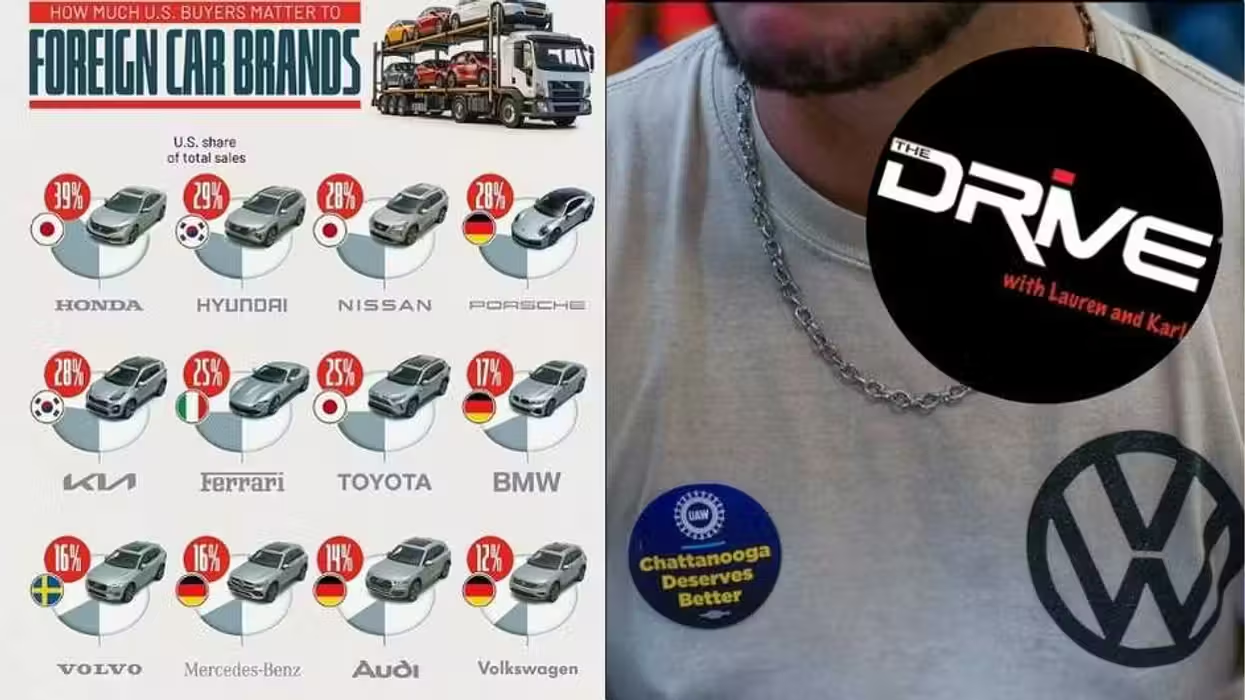
© 2025 Blaze Media LLC. All rights reserved.
Smart Guns' Being Developed That Only Shoot in the Hands of Authorized Users -- But Is the Tech Up to Snuff?
January 16, 2013
"One failure, one time on the range and I would have no interest in ever carrying that gun again."
Last week at a meeting regarding gun safety, Vice President Joe Biden expressed an interest in technology that would prevent firearms from being shot by anyone who wasn't the gun purchaser. Or to give a popularized example, think of the gun 007 was given in the latest James Bond movie "Skyfall" coded to his palm print so only he could fire it.
 James Bond in the latest movie "Skyfall" received a gun coded to his palm. (Image: James Bond Skyfall)
James Bond in the latest movie "Skyfall" received a gun coded to his palm. (Image: James Bond Skyfall)
TheBlaze decided to take a look at just what is out there in the way of such technology. The short answer is, there's not much.
Take TriggerSmart, which is a system that uses radio-frequency identification (RFID) to childproof guns. TriggerSmart's technology -- which had a patent granted in the U.S. last year and has an international patent pending -- has the vision to create "smart guns" where only an authorized user could fire the weapon. The technology also seeks to allow remote disabling, called Wide Area Control, of firearms in certain areas, such as airports and schools.
The Irish inventor of the TriggerSmart concept Robert McNamara explained to Reuters in December "we have a technology that could have helped prevent [the Sandy Hook] massacre." McNamara was recently on Fox News explaining how it works:
The problem is that it seems the technology might not be good enough to entice anyone to buy it yet. Reuters has more on that front:
The New Jersey Institute of Technology has spent millions of dollars in federal and state grants to achieve what Senior Vice President of Research and Development Donald H. Sebastian says is a working prototype of a grip-recognizing gun with a success rate of 99 percent or better.[...]
But gun advocates and some in law enforcement officials say the institute's success rate is not good enough.
"One failure, one time on the range and I would have no interest in ever carrying that gun again," said Mitch Barker, executive director of Washington state's Association of Sheriffs and Police Chiefs. He said guns occasionally jam or misfire for other reasons, but officers are trained to handle such malfunctions.
McNamara's TriggerSmart technology though, RFID Journal founding editor Mark Roberti told Reuters, is "very reliable." Roberti pointed out what the technology would need to ensure is that the gun would activate quick enough for the user. It is this problem that Roberti expressed comes up with using biometric data, like in the James Bond gun.
"The problem with fingerprint, palm print and other biometric approaches to preventing guns from being fired by those not authorized to do so is that it takes time to analyze biometric data," Roberti wrote in a blog post.
The research conducted by NJIT for more than a decade uses biometrics called Dynamic Grip Recognition. Here's more from NJIT about how the technology, which is still in development, works:
“This is about who you are and how you do something, said Sebastian. This biometric is the foundation of Dynamic Grip Recognition. The technology measures not only the size, strength and structure of a person’s hand, but also the reflexive way in which the person acts. For smart gun, the observed actions are how the person squeezes something to produce a unique and measurable pattern. Embedded sensors in the experimental gun then can read and record the size and force of the users’ hand during the first second when the trigger is squeezed.
Russia is also working on an electronic chip that will be programmed with a gun owner's biometric data and would prevent the weapon from firing in the hands of unauthorized users.
Another personalization technique is that like ITC's iGun. Here's how that works:
The user wears a ring with a special system that triggers power to the iGun system when the ring comes in close range to the normal ring-finger placement on the firearm's stock. When the iGun senses that the ring is near enough, it compares a unique code (billions of combinations) from the ring to the gun to see if there is a match. If the code matches and certain other conditions are met, an electric current from the battery bank actuates a mechanism to unblock the trigger. At all times, the gun's traditional manual safety is still available for use. If the manual safety is "off", the gun may be fired.
ITC goes on to say in a position statement though that it doesn't want "to see our technology or anyone else's mandated by law. Personalized firearm ownership should be a choice based on one's own careful consideration of available options and the proper weighing of risks versus benefits of such technology."
But some legislation will mandate it. A law passed in New Jersey in 2002 will require all handguns sold in the state to have such "smart" or "personalized" capabilities once the technology is widespread enough. The Law Center to Prevent Gun Violence explains more about what New Jersey's legislation entails:
Twenty-three months after the Attorney General finds that smart handguns are available for retail sale, the Attorney General and the Superintendent of State Police must begin the process of promulgating a list of such handguns that may be sold in New Jersey. This process must be completed within six months.Six months after the initial list of handguns is approved, it will be unlawful for any licensed manufacturer, wholesaler, or retail firearms dealer to transport into New Jersey, sell, expose for sale, possess with the intent of selling, assign, or otherwise transfer a handgun unless it is a personalized handgun (excluding antique handguns and handguns used by law enforcement or military officers).
McNamara with TriggerSmart told Reuters that gun manufacturers seem reluctant to jump on board his idea so far.
"The attitude is, ‘We understand this technology is coming down the track and we'll deal with it when we have to,'" he said. "They're concerned about the liability aspect. When you put it in one gun you'll have to put it in every gun."
Featured image via Shutterstock.com.
Want to leave a tip?
We answer to you. Help keep our content free of advertisers and big tech censorship by leaving a tip today.
Want to join the conversation?
Already a subscriber?
more stories
Sign up for the Blaze newsletter
By signing up, you agree to our Privacy Policy and Terms of Use, and agree to receive content that may sometimes include advertisements. You may opt out at any time.
Related Content
© 2025 Blaze Media LLC. All rights reserved.
Get the stories that matter most delivered directly to your inbox.
By signing up, you agree to our Privacy Policy and Terms of Use, and agree to receive content that may sometimes include advertisements. You may opt out at any time.






